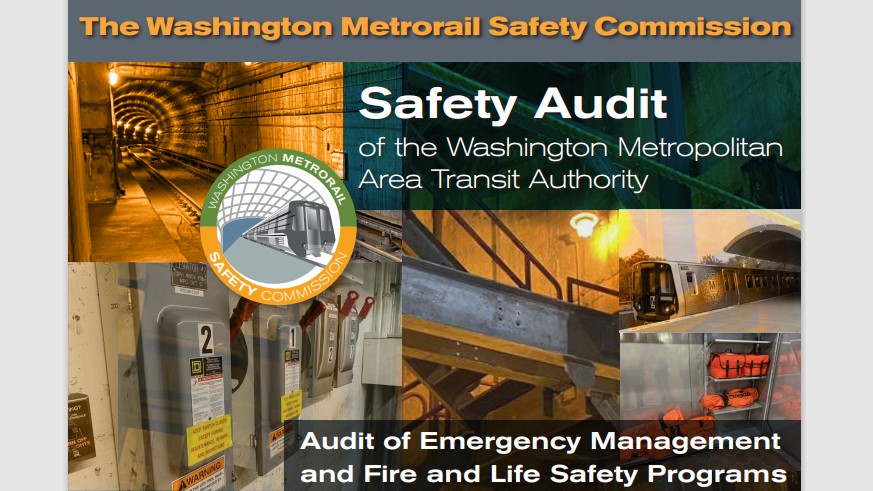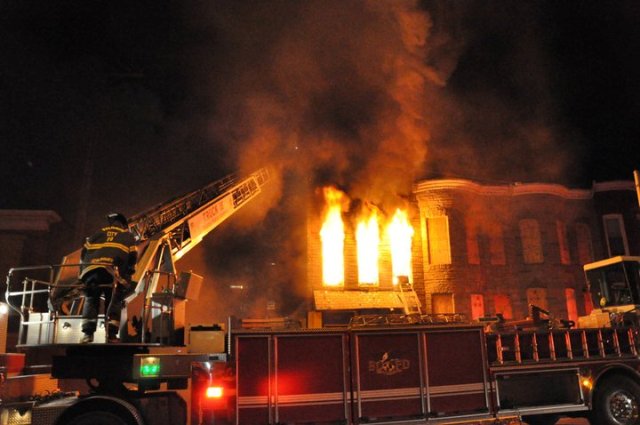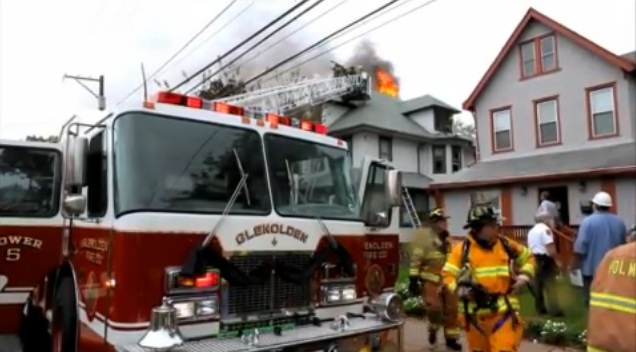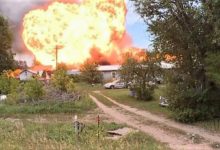New report: Metrorail not meeting fire, life safety & emergency management standards
"Metrorail is not meeting its own written requirements, does not have adequate procedures, processes or requirements, or does not have adequate training, coordination and supervision."
Looking for a quality used fire truck? Selling one? Visit our sponsor Command Fire Apparatus
Read WMSC’s Audit of Emergecy Management and Fire and Life Safety Programs
Read Metro’s response to WMSC’s Safety Audit
(NOTE: Since the posting of this story Metro has provided a detailed response disputing a number of the findings in the WMSC Safety Audit. You can read the response here.)
A report released today (Tuesday) shows a continuing failure to make safety a priority on Metrorail, the subway system serving the National Capital Region. This safety audit brings new reasons for riders to again be concerned whether Metro has the procedures, systems, and equipment in place to reduce hazards and to ensure a safe and timely evacuation or rescue during a rail emergency.
Regular readers will recognize that a few of the incidents and issues brought up by Washington Metrorail Safety Commission (WMSC) investigators were first reported by STATter911. But what WMSC has done is illustrate how all of that and much more fit into a broader picture showing serious flaws in the many components necessary to keep riders and workers safe.
Some basic failures
The audit shows Metro and the Metro Transit Police Department (MTPD) consistently fail to follow nationally recognized best practices and even internal standards during rail emergencies. The National Incident Management System (NIMS) has been in place since 2004. It’s generally the template for how all levels of public safety, government and even the private sector handle incidents large and small and work with each other. These important organizational structures, processes and procedures are critical to effectively handling emergencies.
NIMS and the incident command structure (ICS) are basic. Not employing it means Metro and MTPD aren’t speaking the same language as everyone around them — specifically fire, EMS. and other police agencies. WMSC says this failure causes confusion among “MTPD officers and other Metrorail personnel about their roles and responsibilities during emergencies.”
WMSC said these problems were apparent during the train pull-apart north of Union Station and the derailment near the Silver Spring Station. Both occurred in 2020. In regular investigative reports WMSC releases monthly it’s common to read that MTPD did not employ NIMS/ICS.

MTPD gets considerable scrutiny in the audit. Despite deaths and serious injuries to Metro workers through the years, Metro has not required transit police officers to go through Roadway Worker Protection training. Again, this is basic training. As WMSC puts it, “Metrorail’s first ‘Cardinal Rule’ of Roadway Worker Protection (RWP) is that ‘All personnel, regardless of rank or title, shall be RWP trained and qualified before entering the Authority’s Roadway.’ ”
According to the audit, “Records provided by MTPD showed that of the hundreds of MTPD personnel, only 19 individuals have current RWP qualifications.”
The audit gives a clear impression that MTPD is on often not on the same page as the rest of the system when it comes to rail emergencies. The report highlights a December 2020 incident near Ft. Totten where a power problem stranded two trains. The night it occurred radio transmissions from DC Fire & EMS made clear its crews were not participating in the evacuation that was started by MTPD officers. Firefighters and EMS remained on the platform because MTPD and Metro were not using proper safety devices that warn if third rail power is accidentally restored.

Calling 911
Confusion and delay getting help during rail emergencies is a decades old problem for Metro that continues today. As the report points out, it happened 40-years-ago when Metrorail had its first fatal incident during a derailment near the Federal Triangle Station, seven-years-ago during the fatal fire at L’Enfant Plaza, and last March as passengers were stranded on a Red Line train near Rhode Island Avenue.
Sadly, the Rail Operations Control Center’s (ROCC) inability to effectively communicate with 911 centers has been a staple of my reporting. WMSC describes the problem this way: “During emergencies, Metrorail’s calls to public safety answering points (911 call centers) are inconsistent, incomplete and contribute to delayed or ineffective emergency response.”
WMSC wants Metro to work with 911 centers to standardize its communications during incidents.
What does Metro’s Fire Marshal do?
Metro has its own Fire Marshal, but WMSC could not find clarity on the FM’s duties: “Metrorail has not clearly defined and communicated the authority and duties of its Fire Marshal and any other fire prevention roles or positions.”
Similarly, Metro created the position of Incident Management Official (IMO) after the numerous safety lapses during the previously mentioned March 2021 incident near Rhode Island Avenue. WMSC found the IMO was installed at the Rail Operations Control Center (ROCC) “without any specific procedures, specified responsibilities, procedural updates to reflect this position, or any other documentation. Personnel working as or with IMOs did not receive specific training or procedures.”
WMSC has hit on a pattern that highlight’s Metro’s seeming lack of regard for staff whose duties involve key fire and life-safety issues. The audit shows Metro fails to engage these experts as new projects are developed or when dealing with improvements to existing infrastructure.

WMSC says, “Metrorail must implement processes to ensure that fire and life safety and emergency management experts with appropriate skills and experience are included in, and have a documented role in project identification, and in the development, planning, review and approvals of each project from project development and implementation through project completion.”
Questions about Metro’s safety hardware
Half of WMSC’s section on “Findings and Minimum Corrective Actions” involves the safety infrastructure riders pass each day. This includes things like fire alarms, extinguishers, standpipes, sprinklers, medical cabinets, tunnel egress hatches, lighting, and emergency exits. WMSC has found procedures lacking for making sure all these items work and are available during an emergency.
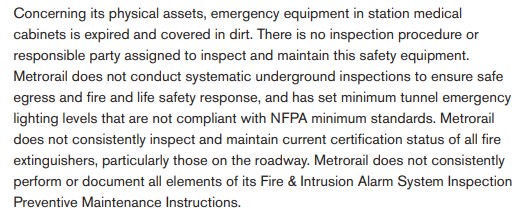
Besides its overall findings investigators discovered some specific issues during station visits. These include:
- Metro “introduced flammable material into the tunnel environment” by using temporary stairs made of untreated wood.
- “The exit stairwell from Rosslyn Station is not protected from obstructions, which creates a risk that the hatch
will not be able to be opened in an emergency, trapping customers inside.” - “The WMSC has also found expired fire extinguishers during inspections conducted separately from this audit, including extinguishers on the roadway near West Falls Church Rail Yard.”
- “… the emergency equipment in Metrorail’s station medical cabinets is discovered in dirt and has expired at each of the stations examined. This includes bags with bandages, Sked emergency rescue stretchers, and glow sticks that are used to help guide customers out of a dark tunnel in an emergency. The glow sticks, for example, had expired in 2019.”
It wasn’t just WMSC that noted the problem with the medical cabinets. According to the audit:
“Arlington County Fire Department inspections had identified these issues at multiple stations most recently in January and February 2021 and provided inspection documents to Metrorail that were reviewed as part of this audit; however, the Metrorail fire and life safety personnel who accompanied the WMSC on site visits that found the same issues in August 2021 were unaware of the prior findings.”

